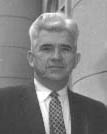ESP (Extrasensory Perception)
ESP is an acronym for extrasensory perception, a subject of parapsychological research that is fraught with controversy from its name to its very existence.

Duke University psi researcher, Joseph Banks Rhine (1895-1980, most often cited as J.B. Rhine) is credited with first using the acronym and coining the phrase ESP. However, German researchers Gustav Pagenstecher and Rudolph Tishchner used the German equivalent phrase, "Aussersinnliche Wahrehmung" as early as the 1920s. Rhine first brought the phrase to public attention with the publication of his 1934 book on the subject, Extra Sensory Perception.
Throughout the ages, government officials from Monarchs to modern Law Enforcement agencies have sometimes employed psychics. The predictions of Nostradamus (Michel de Nostredame, 1503-1566) have been studied since the publication of his book, Les Propheties, in 1555.
J.B. Rhine spent the better part of his life studying ESP3. In the early 1930s, psychologist Karl Zener developed a deck of Zener Cards, used in conducting experiments with colleague J.B. Rhine. The Zener Card deck was composed of five card designs each represented five times, making a deck of 25 cards. Each geometric symbol displays a different number of "lines".
 |
|
Using the Zener cards, Rhine and Zener developed a series of different tests to determine the ESP abilities of individuals that showed psychic promise. Although tests included those for clairvoyant abilities, telepathy, and precognition and initially results appeared promising, later findings showed that the tests were poorly designed and seriously flawed, allowing the subjects ample opportunity to cheat. In some cases, allegations were made that Rhine's associates altering the test results in favor of the psychic abilities of the subjects4.
The Rhine Research Center and Institute for Parapsychology, which was originally part of Duke University, is now an independent research center.
In 1974, a new generation of ESP researchers conducted a series of tests called the Ganzfield experiments. In these tests, the subjects were mildly sensory deprived with halved Ping-Pong balls placed over their eyes to block their vision and white noise played through headphones to block out sound. A "sender" sent a series of messages which were later compared to what the subject "received". Although the Ganzfield tests were considered to be the most carefully scrutinized of all ESP tests, like the Zener card tests that preceded them, Ganzfield tests failed in proving the existence of Extrasensory Perception.
In recent years, ESP has become a "catch all" term for several specific psi fields of study:
- Telepathy – communication of thought outside of normal sensory channels
- Clairvoyance – most closely associated with ESP, second sight or the ability to perceive places, objects, or events outside of normal sensory channels
- Precognition – foreknowledge of an event
- Psycho kinesis – synonymous with telekinesis, the ability to use thought to move an object, "mind over matter"
Belief in Extrasensory perception remains widespread today, although science has yet to gather hard evidence to support its existence5. The phenomenon continues to be known by many names; second sight, intuition, and the Sixth Sense are all common terms used to describe ESP.
2. “Extrasensory Perception.” Glossary of Psi (Parapsychological) Terms (E-K) n.d . 22 Jun 2008
3. “Joseph Banks Rhine .” Wikipedia, the free encyclopedia 11 Mar 2008. 22 Jun 2008
4. Charles M. Wynn and Arthur W. Wiggins. “Normal Sensory Perception, Extrasensory Perception, and Psychokinesis.” Quantum Leaps in the Wrong Direction. Joseph Henry Press (JHP), 2001. 144-165. 22 Jun 2008.
5. Charles H. Townes. Science, technology, and invention: Their progress and interactions. Natl. Acad. Sck. USA, 1983. 22 Jun 2008
